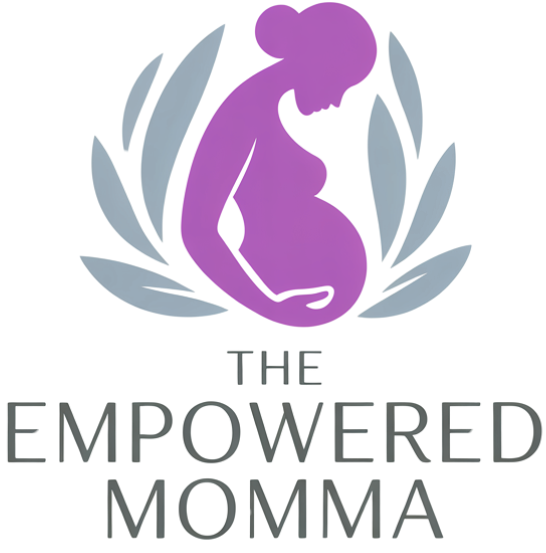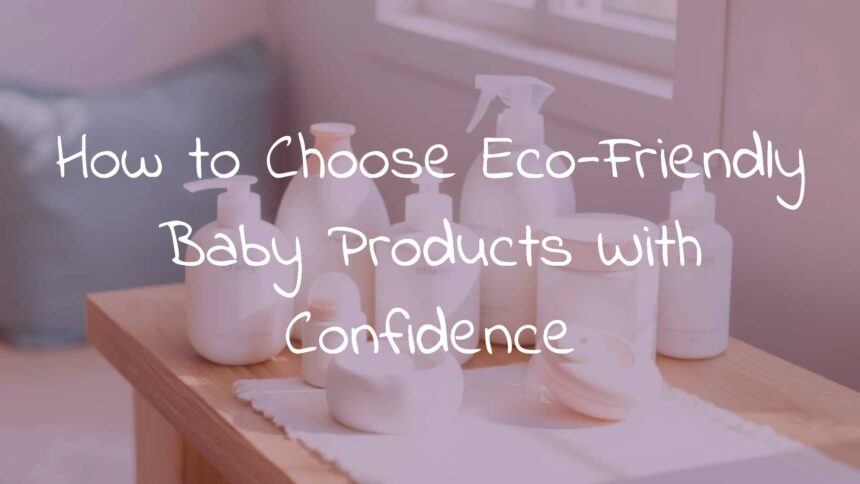Here is a rewritten version of your blog post, revised for clarity, simpler language, and directness.
Why Use Eco-Friendly Baby Essentials?
Picking eco-friendly baby essentials isn’t just a passing idea; it’s a smart choice that helps your baby, saves money, and protects the environment. When parents welcome a child, they often start to think more about the effect their choices have on the earth. By picking sustainable options, you help reduce your child’s contact with unsafe chemicals and cut down on trash, which can lead to cost savings over time. These choices also set the stage for healthier habits at home.
Shopping for baby gear today can feel like too much, especially since many easy options have hidden risks for health and the environment. If you put eco-friendly choices first, you can feel confident that you’re doing what’s best for your family and the planet. This approach helps create a kinder, healthier place for your baby to grow.

Why Eco-Friendly Baby Products Are Good for Your Baby
Eco-friendly baby products are safer for your baby’s health. Many common baby items have chemicals, dyes, and scents that can irritate skin or even cause health problems over time. For example, regular baby clothes might have chemicals added to make them fire-resistant, and some plastics can leak unsafe substances into food and drinks. Eco-friendly products usually use safer, natural materials.
Try organic cotton, bamboo, or natural rubber for things that touch your child like clothes, bedding, or toys. These are less likely to cause rashes or allergies. Using low-chemical furniture and paint also keeps air cleaner, which protects your baby’s developing lungs.
How Regular Baby Products Affect the Environment
Traditional baby products often hurt the planet. For instance, in the US, more than 18 billion disposable diapers end up in dumps every year, and each one can take centuries to rot away. The way most baby clothes are made also uses lots of water and harsh chemicals, which can pollute soil and water.

There’s also a heavy use of plastics, from bottles to toys, which adds to worldwide plastic waste. Switching to things like cloth diapers, used baby clothes, and products made out of wood or plants can really cut down on harm. Some companies even use less water and energy or reuse what they use at the factory.
Saving Money with Eco-Friendly Baby Products
Some green baby products cost more at first, but they save families a lot in the long run. Reusable items like cloth diapers and washable wipes mean you don’t have to keep buying new ones, saving money over time. A sturdy crib that turns into a toddler bed or sofa lasts longer, and high-quality toys can be handed down or given away. Shopping for secondhand baby gear is another way to save and avoid waste-many items have barely been used and are just as good as new.
Safe and Sustainable Materials for Babies
It’s important to pick materials that are safe and don’t harm the environment. Parents today are turning away from plastics and man-made fabrics, choosing things like organic cotton, bamboo, and plant-based materials.
Choose items that “breathe,” use fewer chemicals, and are made responsibly. See the table below for a quick guide to these materials:
| Material | Common Uses | Why It’s Good |
|---|---|---|
| Organic Cotton | Clothes, bedding, wipes | Soft, chemical-free, less likely to cause a reaction |
| Bamboo | Clothes, bedding, diapers | Soft, grows fast, needs fewer pesticides |
| Natural Rubber | Pacifiers, toys, teethers | Biodegradable, not made from oil |
| Silicone | Bottles, feeding products | Safe, easy to clean, no harmful chemicals |
| Wool | Bedding, blankets | Warm, natural, renewable (best not touching baby’s skin directly if sensitive) |

Certifications like GOTS and OEKO-TEX help you find textiles (like clothes and sheets) that are made safely.
Eco-Friendly Baby Clothing and Accessories
Your baby grows fast, and you’ll go through lots of clothes in the first year. Fast growth can mean lots of waste, so it’s good to focus on sustainable choices.
Tips for Eco-Friendly Baby Clothes
- Pick organic cotton for softer, safer clothing.
- Brands to try: Burt’s Bees, Honest Baby, Little Planet by Carters, Primary.
- Bamboo viscose is another good material-it’s very soft and helps keep baby comfortable.
Look for trusted safety stamps like GOTS or OEKO-TEX on labels.
Preloved vs. New Clothes
Used baby clothes are usually barely worn. Getting clothes from friends, family, secondhand stores, eBay, or groups like Facebook Marketplace saves money and keeps clothes out of the dump. Buying some new sustainable pieces is fine, but mixing in pre-owned clothes helps the environment and your budget.
Sustainable Accessories
For bibs and burp cloths, go for organic muslin or cotton. Try Synrroe muslin burp cloths or Diaper Squad’s bandana bibs for affordable, soft options. For swaddles and sleep sacks, choose organic cotton or bamboo, and check for clean certifications to avoid chemicals. Australian brand Ergopouch has a popular line with safe materials.
Green Diapering Choices
Diapers are a huge source of household waste. But you don’t have to stick with disposables. Here are your options:
Cloth vs. Biodegradable Diapers
- Cloth diapers: Can be washed and used over and over. They cost more in the beginning but save money and waste later on.
- Biodegradable diapers: Made with plant-based layers that break down faster than regular diapers (if composted right), but they still add some waste.
Check for strong testing before you buy biodegradable diapers to make sure they still soak up well and fit comfortably.
| Diaper Style | Waste Created | Ongoing Cost | Convenience | Avg. Decomposition |
|---|---|---|---|---|
| Cloth (reusable) | Low | Low | More work (laundry) | N/A |
| Biodegradable | Less than plastic | Medium | Same as disposables | ~2 months (conditions apply) |
| Regular disposable | High | High | Easiest | Up to 500 years |

Reusable Wipes and Green Creams
Washable wipes are a small swap that cuts down on trash. Cheeky Wipes makes simple kits. If you prefer disposable wipes, look for plant-based, compostable ones (like Honest wipes).
Diaper creams should be made from plant or mineral-based ingredients-avoid those with added perfumes or petroleum. Good choices include Green People Soothing Salve or Tubby Todd’s natural paste.
Disposal
Composting programs like DYPER’s REDYPER for biodegradable diapers are best, but if not possible, dispose responsibly. For cloth diapers, hang-dry when you can, to use less electricity.
Safe Skincare and Bath Needs
Baby skin can soak up more chemicals than adult skin, so picking non-toxic bath and skincare items is very important. Usual skin products might carry things like perfumes or parabens that can cause reactions. Stick with natural, simple products.
Ingredients to Look For
- Oat extracts (soothing)
- Glycerin (moisture)
- Calendula (calms skin)
- Panthenol (heals irritation)
- Organic oils (like coconut, sunflower, jojoba)
Don’t use things with artificial scents, sulfates, or harsh chemicals. Look for simple ingredient lists and certifications.
Safe Bath Products
- Shampoos: Try Dr. Bronner’s Unscented Soap for a gentle wash.
- Lotions: Earth Mama Baby Lotion Scent-Free is a good pick.
- Sunscreen: Green People organic SPF 30 (uses safe minerals, not chemicals).
Plastic-free toys and accessories (like rubber duckies or wooden brushes) help avoid mold and reduce waste.
Greener Feeding Products
Feeding choices matter. Avoid plastics when possible, especially for things that get heated or go in the mouth.
Bottles and Cups Options
- Glass bottles (like Philips Avent): Non-toxic, but need to be handled gently.
- Silicone bottles (Comotomo): Flexible, safe, and chemical-free.
- Stainless steel (Pura): Durable and adapts as baby grows.
Tableware and Storage
- Use bamboo or silicone for plates and bowls (like Bubba Bear or Ezpz).
- Stainless steel or silicone containers are best for food storage.
- Reusable silicone pouches replace single-use snack bags.
- Choose reusable nursing pads (organic cotton or bamboo) for moms.
Setting Up a Green Nursery
A green nursery keeps your baby safe and helps the planet.
Mattresses and Bedding
- Choose organic, chemical-free mattresses. Look for certifications like GOTS, GOLS, MADE SAFE, and GREENGUARD Gold.
- Naturepedic and HALO DreamWeave are good brands.
- Get organic cotton or muslin sheets from brands like Burt’s Bees.
Furniture, Paint, Storage
- Buy cribs made with certified wood and non-toxic paints/finishes.
- Secondhand furniture is often a smart, green choice.
- Use baskets or bins made from natural fibers or recycled materials. Wood shelves last longer than plastic.

Green Toys and Learning Materials
Plastic toys break easily and add to the garbage problem.
Picks for Green Play
- Wooden toys (from reputable brands like Lalo) and natural rubber toys are durable and chemical-free.
- Look for toys finished with non-toxic paints.
- For play mats, choose organic cotton or natural rubber.
Books & Sharing Toys
- Choose books made from recycled paper or buy secondhand.
- Try toy rental programs like Whirli, or swap toys with friends to reduce clutter and waste.
Building an Eco-Friendly Baby Registry
Setting up a baby registry can be confusing, but you can do it with sustainability in mind.
Steps to Take
- Make a list of must-haves, not just nice extras.
- Focus on key items-safe sleep space, a few versatile clothes, durable feeding items, and basic diaper supplies.
- Look for products with these certifications:
| Certification | What It Means | Use For |
|---|---|---|
| GOTS | Organic and fair textiles | Clothes, bedding |
| OEKO-TEX | Checked for bad chemicals | Clothes, bedding |
| GREENGUARD Gold | Low chemical emissions | Mattresses, furniture |
| MADE SAFE | Free from many bad substances | Skincare, some baby goods |
| GOLS | Organic latex | Mattresses, toys |
You can also ask for secondhand or rental items, or suggest group gifts for larger green items.
Common Questions About Green Baby Products
Are Secondhand Items Safe?
Most used baby gear is very safe. Clothes, many toys, and even furniture can be bought secondhand if you clean and inspect them well. The exception is car seats (which should be new for safety). Also check mattresses and cribs for current safety guidelines.
How Do You Spot Greenwashing?
Some companies pretend to be “green” but aren’t. Watch for:
- Vague claims like “eco-friendly” without details or certifications.
- No clear information about how products are made or tested.
- Fancy packaging but no real proof of being green.
- Products boasting just one eco feature while ignoring others.
- Lack of third-party certifications.
Learn about key labels and avoid products that seem suspicious or too good to be true.
What Certifications Should You Look For?
Always check the label for:
- GOTS (for organic textiles)
- OEKO-TEX (safe textiles)
- GREENGUARD Gold (low emissions)
- MADE SAFE (no bad chemicals)
- GOLS (organic latex)
- Clearly labeled “BPA-free” and “food-grade” for feeding items
Raising an Eco-Friendly Baby: The Bigger Picture
Choosing eco-friendly baby products helps both your child’s health and the planet. Small steps add up and make a big difference-in your home and beyond. Teaching kids to respect the environment, appreciate outdoor play, and avoid waste helps create good habits early on. Even simple family routines, like reusing or repairing, can help kids value sustainability. By making careful choices now, you help your child grow up mindful of the environment and ready to care for the world around them.

